On the benefits of a longtime collaboration
Prelude
Nicholas Kahn and Richard Selesnick are a collaborative artist team who have been working together since they met while attending art school at Washington University in St. Louis in the early 1980s. Both were born in 1964, in New York City and London respectively. They work primarily in the fields of photography and installation art, specializing in fictitious histories set in the past or future. Their most recent project, the Tarot Deck of the Drowning World, is currently live on Kickstarter.
Conversation
On the benefits of a longtime collaboration
Artists and worldbuilders Kahn and Selesnick discuss discovery and sharing, making use of creative accidents, and how a lifelong collaboration is a lot like cooking.
As told to Meredith Graves, 3249 words.
Tags: Art, Magic, Collaboration, Inspiration, Process.
Can you each recall the first moment when you looked at the other and went, “Whoa, that’s someone I am going to make art with for a long time”?
Richard Selesnick (S): Oh, I know mine. We had just arrived at university in St. Louis and we went off into the woods in the park, Forest Park.
Nicholas Kahn (K): Oh, yes.
S: We found a large group of stones and we both started building little stone circles and stone alignments. It was completely fun and magical and it was play, but also I kind of felt we were world-building almost immediately, like if you were 10 or something in the woods playing with your friends.
K: I’m afraid that would be mine as well. We met when we were 17 applying for Washington University in St. Louis. We started chatting, I was talking about all the photo projects I was doing in high school, I’d studied architecture at Cornell Summer School and loved making architectural models, and I loved painting and drawing. And Richard was also into all the exact same kinds of things! We were already discussing all these English neo-romantic artists, I’d never had anyone else I could talk with about that stuff.
We were set up as roommates for this weekend where they were kind of trying to see if we were going to get the scholarship. We both got half scholarships, and we were both hoping the other would end up going to Walsh U. and then we ended up being across the hall from each other in the dorms and taking every single class together practically. Just because we had such similar interests.
S: It’s a little bit like chemistry in a relationship. You can have, on paper, everything in common with someone, but then it somehow doesn’t gel. So to me it was great we had all this stuff in common, but the fact that we could play together was almost like the key thing for actually being able to do artistic process together.
K: I would agree.
There’s always so much conversation about romantic relationships—instructions from society for getting them, keeping them, celebrities having them, this, that and the other thing. I’m wondering if having the creative partnership that you’ve had for as long as you have has taught you any key takeaways about the nature of human relationships? Especially how to know a good one when you have it.
S: Over the course of it, I think we’ve come to value the longevity of it. We’ve developed such a useful shorthand for communicating with each other and it’s the kind of thing that also happens in marriages—but because so many of our conversations are conceptual conversations, the shorthand becomes a super important part of it. Nicholas knows how I tend to think, I know how he tends to think. So if he refers to something, I know about the kind of mental structure that represents in his mind, if that makes sense.
K: I love discovering things and showing those things that I discovered, I’m a really great researcher and then sharer. Because we have such similar general tastes, it’s pretty easy to know that Richard’s likely going to really love this thing if I really love it. But it’s the sharing of it and getting feedback, and then figuring out, “How can we use this? But maybe with three or four other things that we also love, but no one else quite loves in the exact same combination as we do.” What’s the technique for bringing up this flavor and bouncing against that and seeing how those things are all going to fly? That’s exciting, trying to visualize these combinations of flavors. We have such an experience, going back 40-whatever years.
S: It is kind of like cooking. It’s a lot of basic ingredients, and over the course of a collaborative career, you start to get a concept of how these things work together.
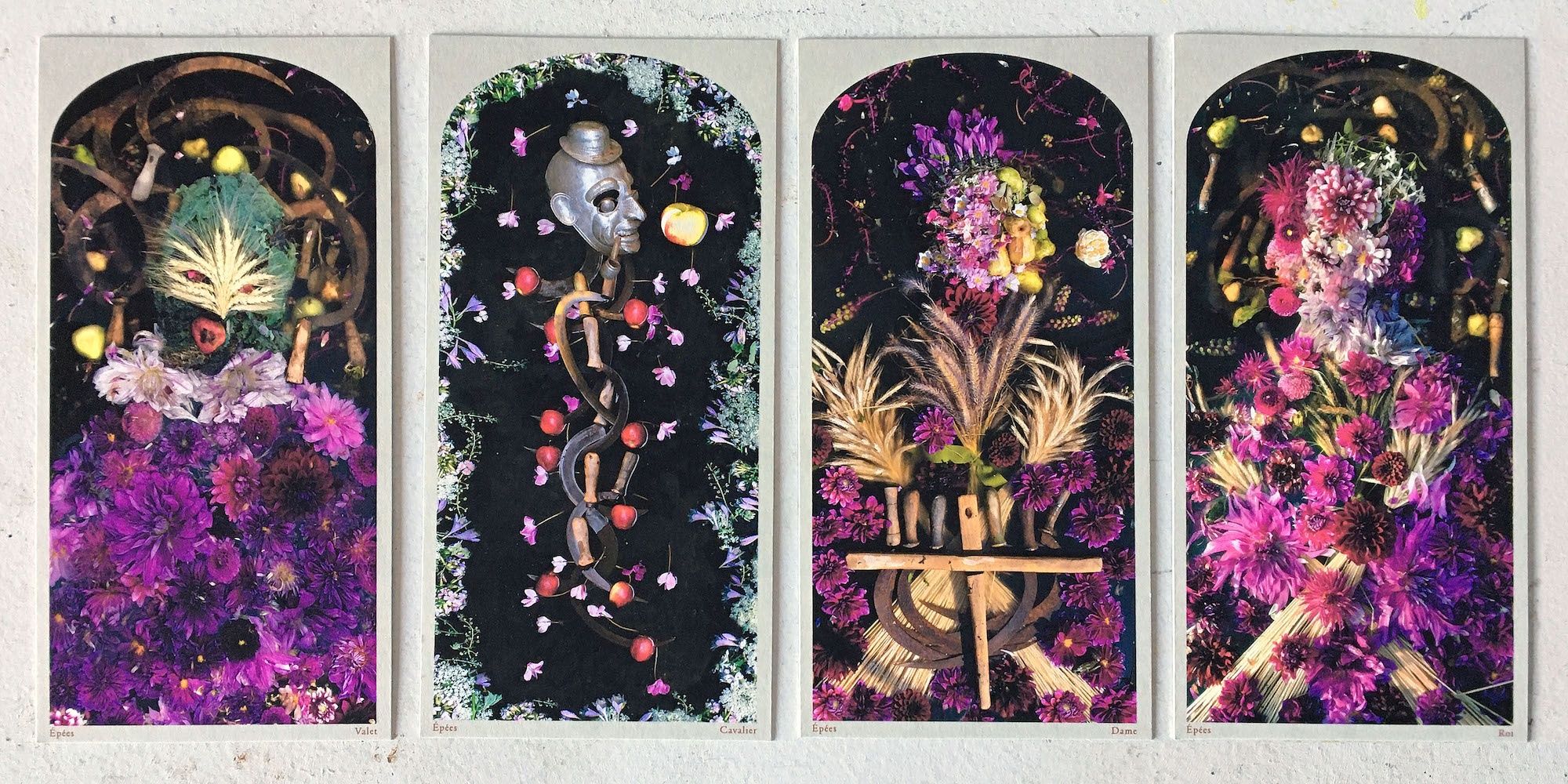
Court of Swords
Cooking is an amazing metaphor, but it makes me think—there’s food included within many of your images, but is food also maybe like the one creative discipline you two don’t touch directly?
S: We do! We did go through a baking phase of making sculpture and heads of bread. If we cook them in the oven a certain length of time, it exactly resembled a mummified head.
K: Yeah, so fun. And I revived a bit of that in this, because I wanted the food obsession to go into the suit of Pentacles. Gold or coins, while I’m interested in the history of them, doesn’t do it for me. I just always feel it’s pastries and bread loaves; that’s why I exist on this planet, is to get the best.
[Richard Selesnick reappears on Zoom holding a museum catalog image of a Bread Head]
Oh, he found one. Well, done.
S: Recently I found one in my closet that I hadn’t touched in over 25 years. It was still in good enough shape that it was part of our retrospective way out on Cape Cod!
K: It’s a lot of salt in the dough. They would ooze this black liquid because they’d absorb moisture from all the salt, and they were burned. So they’d sort of make their own blood, which was quite fun to have. We sold one loaf. We were young then, and fresh to selling internationally, but we sold one of those loaves to a Swiss art collective for $600 back then. And that just was such a thrill, to sell a loaf of bread for $600.
I retract my prior statement about you not treading so far into food.
S: Actually, that particular show we also had another favorite of mine, which was a singing beehive with a kind of antler coming up, a twisting antler. If you put your ear up to the end of the antler, you heard these really super demented English folk songs with rewritten words about bread heads and wickermen, all kinds of stuff.
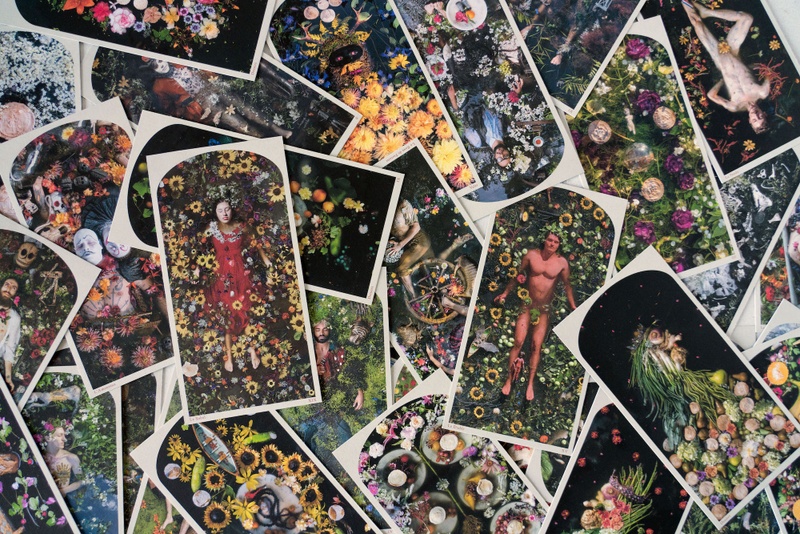
cards on a table
The bread blood, that’s like, another great thing about collaboration—the unpredictability! Things ferment and suddenly you get some really bizarre left turn.
S: That’s especially amazing when it’s a left turn that you don’t think you would have arrived at yourself. That broadens the whole practice beyond what’s possible for just one artist, I think.
K: Well, let’s talk about the things that oozed out during the creation of this tarot deck! I created this pond at the beginning, and I filled it with water and started floating people and objects in there, then grew my life’s veggies and fruits and stuff all around it. The frogs from a marsh that was about six feet from the base of it invaded and laid eggs. And we had tadpoles in there. Over the course of the summer one, then five, then 20 or 30 different frogs lived within the box that I was shooting.
And they were so into these shoots, they would just jump in throughout the whole process. I had no clue I would be so lucky to have these co-stars just emerge from the muck! And they were a large part of the joy, of going out and seeing them waiting for me to do a shoot.
S: In a lot of the cards, if you look really carefully, you can find a little froggy. It’s like a fun game.
K: That’s one of the reasons we made the cards extra large, so that people could spot the froggies.
What about the people of the Drowning World, its citizens?
K: The people often were people I sensed had a look that pulled me to other time periods, they have this face that can go into five or 10 different places at once. That they’re time travelers, and that I’ve recognized that they’re time travelers, and then putting them in this myriad substance, this watery, flowery, between state that you get when you lay in a marsh with flowers for a half an hour, half-freezing, going into a meditative state while the idiot has his camera on a pole and is attempting to use the remote to make it actually work and not fall into the pond and direct all the objects around them and get this quality, this Pre-Raphaelite, Ophelia-like quality there.
So I’m always casting among my friends, people I see—you learn a lot more when you stick your friend into a marsh and throw a bunch of stuff around them. About half of the cards were the summer. Many of them were from like five years ago when I first started throwing people in water. But they all have a certain look that just pulls me in many different times and places at once.
But in terms of collaborating—my partner is in the other room cooking, who’s writing the guide book to this, and is a consistent bouncer-offer for me of all these things. She’s the deeper researcher down all sorts of alleyways. And Richard has his wife Lauren who’s also a visual artist and a bouncer-offer of ideas with Richard, and connector into the world. So we don’t do these things alone, just the two of us. We love inviting other people into our worlds and love collaborating with other people. All of these times that we can pull other people into our world and create something together with them, that’s better than anything that Richard I on our own could do. That’s important.
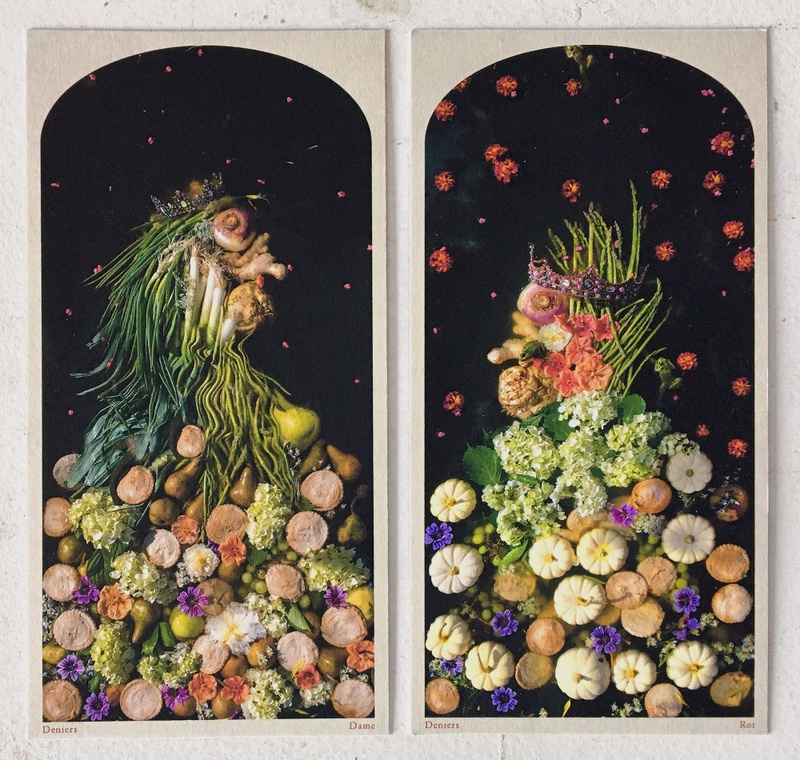
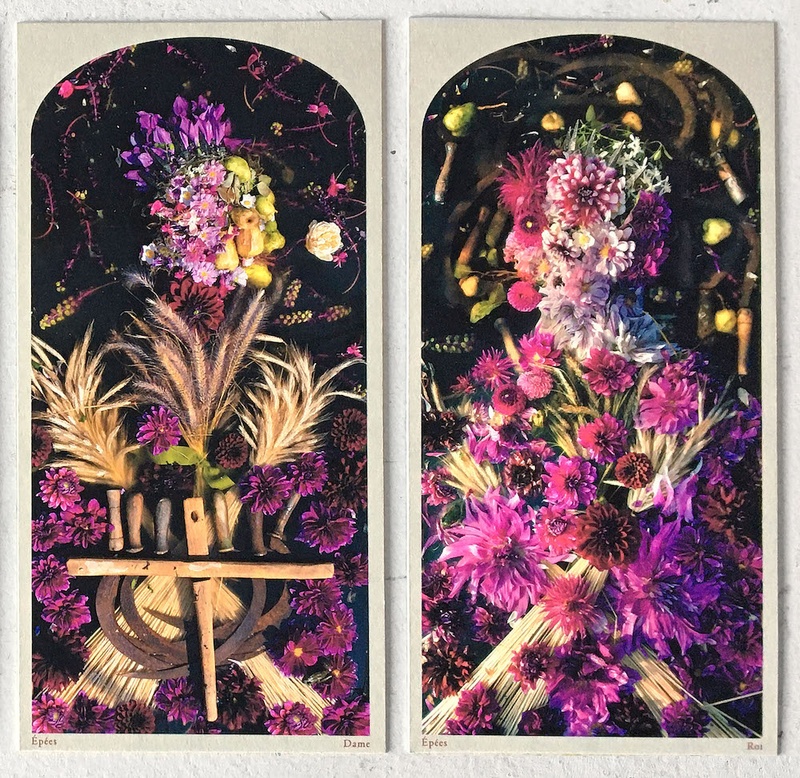
Top: King and Queen of Pentacles; Bottom: King and Queen of Swords
So at some point there’s a world, it becomes defined, it’s given rules, it’s given a purpose, you give it characters and then eventually the characters develop and belong. How do you pair a person with an archetype or character?
K: Richard sensed that these were all tarot figures after I’d shot them. I didn’t realize! I was doing some specific Hanged Man characters, I often play off the tarot figures, but he sensed a bigger story going on there. We just sensed that there was a way to use these people. I didn’t know why I was shooting everyone floating. There was just an urge to do this.
Richard does a lot of the obsessive bookmaking and a lot of the writing, and he loves to surprise me. So he takes all the images that I shot and surprises me by redoing them into an accordion book of these proto-tarot cards. And this is like three, four years ago.
S: I’d laid them out as well, and I made up my own weird suits and numbers and weird little interpretations, but I also use the actual names of all the people. So that was Christian, that was Joshua, that was Julian, Christina, Charlotte. We’re always asking ourselves when we’ve made something, why does this thing exist? That was immediately what I was seeing with these things. We laid them out this way and just suggested we go ahead in trying to complete it. Do the whole thing.
K: That just reminded me of one more thing that I love that was an influence on this. When you mentioned the counting—Peter Greenaway’s film Drowning by Numbers. They all involve a kind of counting as narrative, that weird mix of Dutch still life and modern loss of species and gaming.
S: Rather than a narrative built around literary conventions, you have narratives that are built around gaming. And gaming often involves counting or little kinds of actions that advance the game play, rather than a linear narrative.
At what point in the process do you feel like a project in your studio, to go back to our tadpole friends, has legs?
S: I say the absolute moment of that is always to do with the rule system of what the game is. As soon as that comes into focus for both of us, we can work on stuff together or we can go off and do things separately. Once you have that rule system, then you know what to do. You’re not in random mode fishing around for things. Obviously a really important part, as Nicholas alluded to earlier, is looking at a million things, whether it be film or art or pottery or whatever it is. But as soon as something comes up that grabs you and then a system forms around it, then suddenly that system gives a framework for our actual dialogue with each other. And then suddenly the thing takes off extremely quickly.
K: I was lucky that we pretty much had figured out the system and what I had wanted to do before the lockdown in March a year ago. So I had everything available there and ready to go for starting a garden and starting a card deck. And, we already had shot three quarters, maybe, of the people —during this COVID time, shooting people is not something you wanted to do because you could kill them. Not normally through our standard drowning technique, but with diseases!
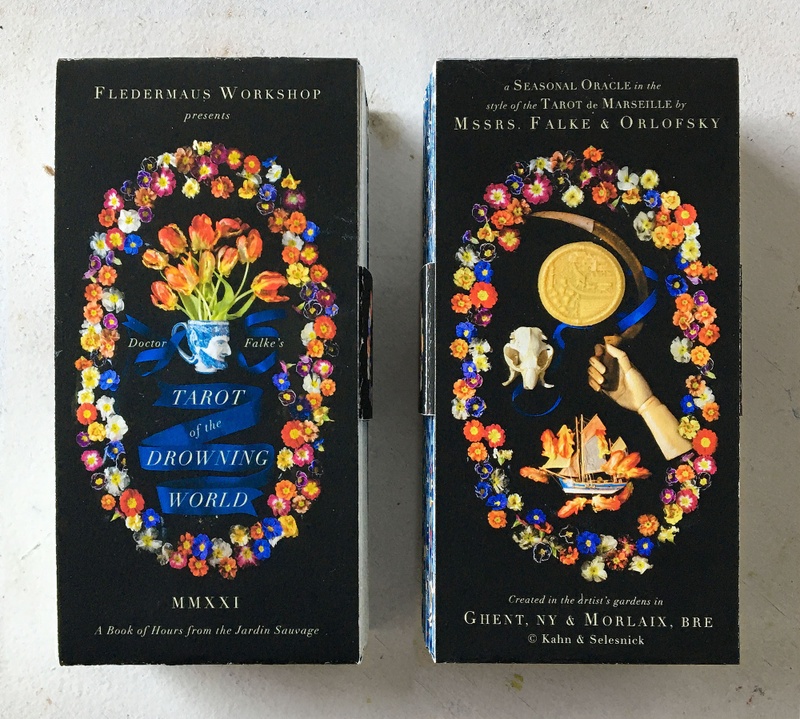
Drowning World
At what point did it occur to you, or was it always part of the process, that you had to have a hand in the nuance? You’re laying every flower by hand, you’re borrowing lizards, you’re making the pottery.
S: I think to me what I’d say about that is, a lot of people ask us why we don’t make films. And to me, it’s kind of like we are making films, but the end project isn’t a film. We’re the costumes, we’re frequently the actors within the scene, we’re scouting locations. We’re kind of doing all aspects of it at the granular level. It’s just not an approach that’s necessarily common in visual or fine arts. It’s very common in things like film.
K: It’s a super low budget, but everything we do gets plowed right back into the project, so that we can discover the next scene in this strange world that we’re creating. So I had to source 10 different Bulgarian sickles for the sword suit. And I had to find, somewhere, all these Indian chapati rollers, rolling pins I bought years ago in Amsterdam. They actually were in many of the portraits we did five years ago, the Floating Figures. I realized—these are my wands. And then I had to source a hell of a lot more of them.
Every one of the suits was something that I got super obsessed by. These Swiss cookie molds are from the 17th century, and there are some modern reproductions that are identical that I had bought at a fair in Kingston from some Amish kids. That this wax one, which turned out to be the one of Pentacles in the end, was this farmer scene, it was super ideal. Really lovely and I didn’t know what it came from. I figured it out when I was looking through the catalog of this Swiss cookie mold reproduction company: there was the original mold that had made this thing I bought a few years ago, and was kind of central to me in thinking about narrative on a cookie, floating cookies.
I had done this with the image of Melora Creager from Rasputina who’s in the deck, one of my favorite bands. In her shot, putting these Dutch waffle cookies in her hands and watching them float around her and dissolve while her hand was coming out of the water, it had this poignancy of the loss and death of this precious food. You would never want to put a cookie in water. And so I sensed something about the stupidity of money and that suit, and connecting that with the destruction of the thing you value by floating it in the water, which automatically destroys it. So I wanted that combination of these beautiful bas-reliefs that you get in these Swiss cookie molds, with them dissolving as I’m trying to shoot them in the water.
And it becomes almost a sport for me, trying to capture the flowers, the floating cookies, get them there and everything in the right order and arrange it, and not fall in myself or drop the camera. So while there everything is placed very particularly, there’s a lot of chance and madness and high speed involved, which I love. Not quite being able to control all the parts spinning at once —quality that leads to kind of creative accidents.
How much of your work feels like purposeful process, and how much feels like magic happening in the game of your life? Or is it just 50/50 all of the time?
S: As my general observation, everything tends to work on a 50/50 kind of a paradigm. Me and Nicholas talk a lot about the ability of things to “flip.” You’ll flip, whether it’s flipping between different realities or different times, or like the way cards and books work. It’s a word that comes up a lot in our discussions.
K: I’m also a very much a Gemini and many of those qualities are in the work in so many ways. It’s ADHD brain, constantly flipping from idea to idea. Then somewhere in between all these things, they start to interconnect: why I’m obsessed with this and that, and this and that. Trying to find somehow, in that moment where it’s all flipping back and forth, that there is somewhere a plot line. And that’s why my life has moved along in this strange way.
The original reason Kahn and Selesnick got together—three years after collaborating full-on in college together, but we weren’t “Kahn and Selesnick”—we were trying to save money at home and then decided we didn’t quite have enough, but we were going to go together and form this group together in Cape Cod to save money, to go and buy an old house in France. And properly collaborate there.
And that was the real plan. Because there was like some scholarship competition. I didn’t win in the end in college to get a studio in Paris that our college had. And I had been obsessed with France since very young. But the fact that the whole reason we got together as Kahn and Selesnick was to end up getting kind of a weird super cheap French ruin and fixing it up. And now here I am, 50 years later practically, doing the damn thing. Feels like, yeah, this plot line was already figured out in early times.
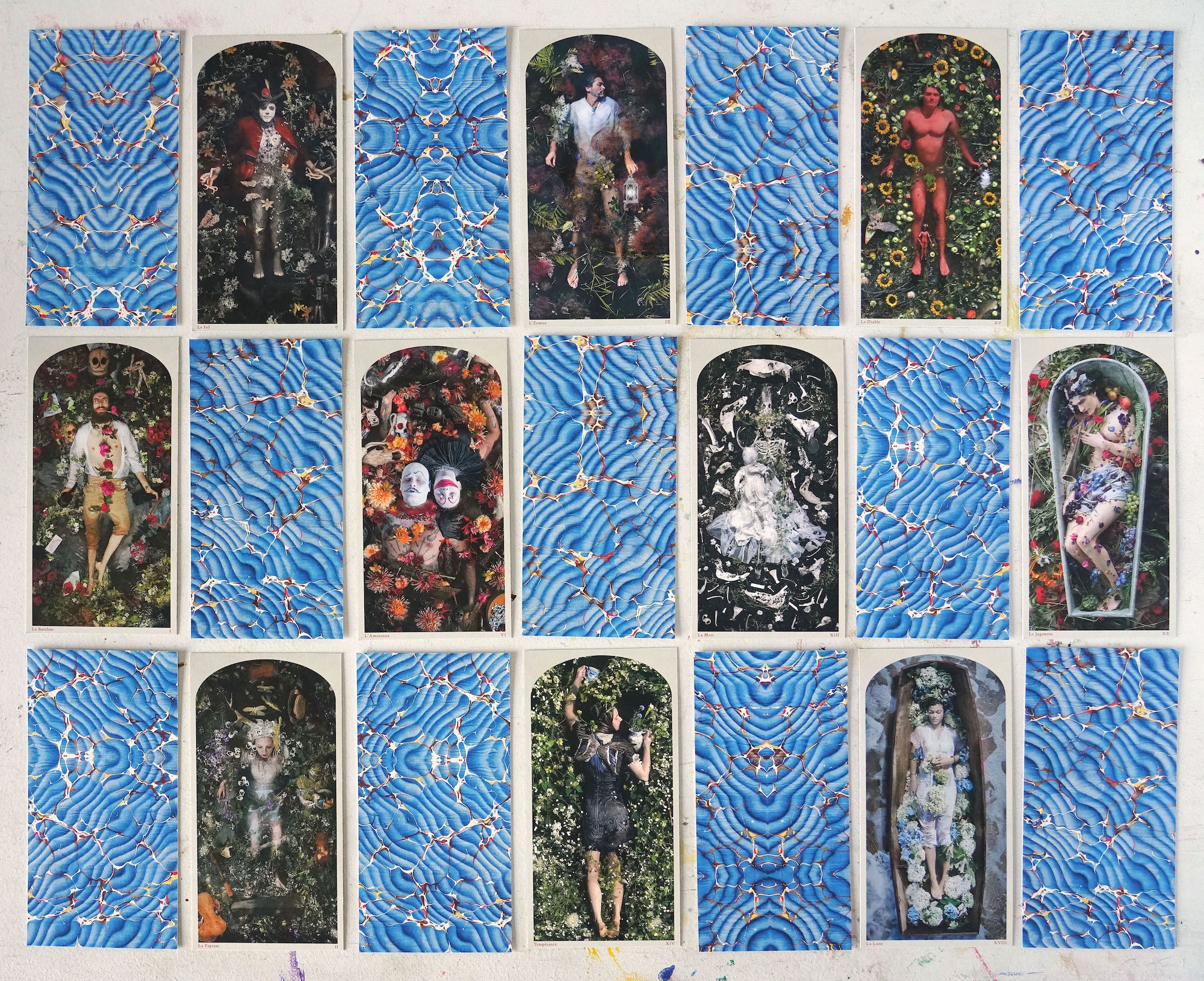
Nicholas Kahn Recommends:
Antique Springerle molds
Antique chapati rollers
Antique Bulgarian sickles
Joris Hoefnagel still lives
Charleston House and Garden in Sussex, England, house of Vanessa Bell and Duncan Grant
Richard Selesnick recommends:
Rings of Saturn by W.G. Sebald
Age of Wire and String by Ben Marcus
The artist Marcel Dzama
Wildermann by Charles Fréger
The Lighthouse (2019 film)
- Name
- Richard Selesnick and Nicholas Kahn
- Vocation
- Artists and worldbuilders
Some Things
Pagination



